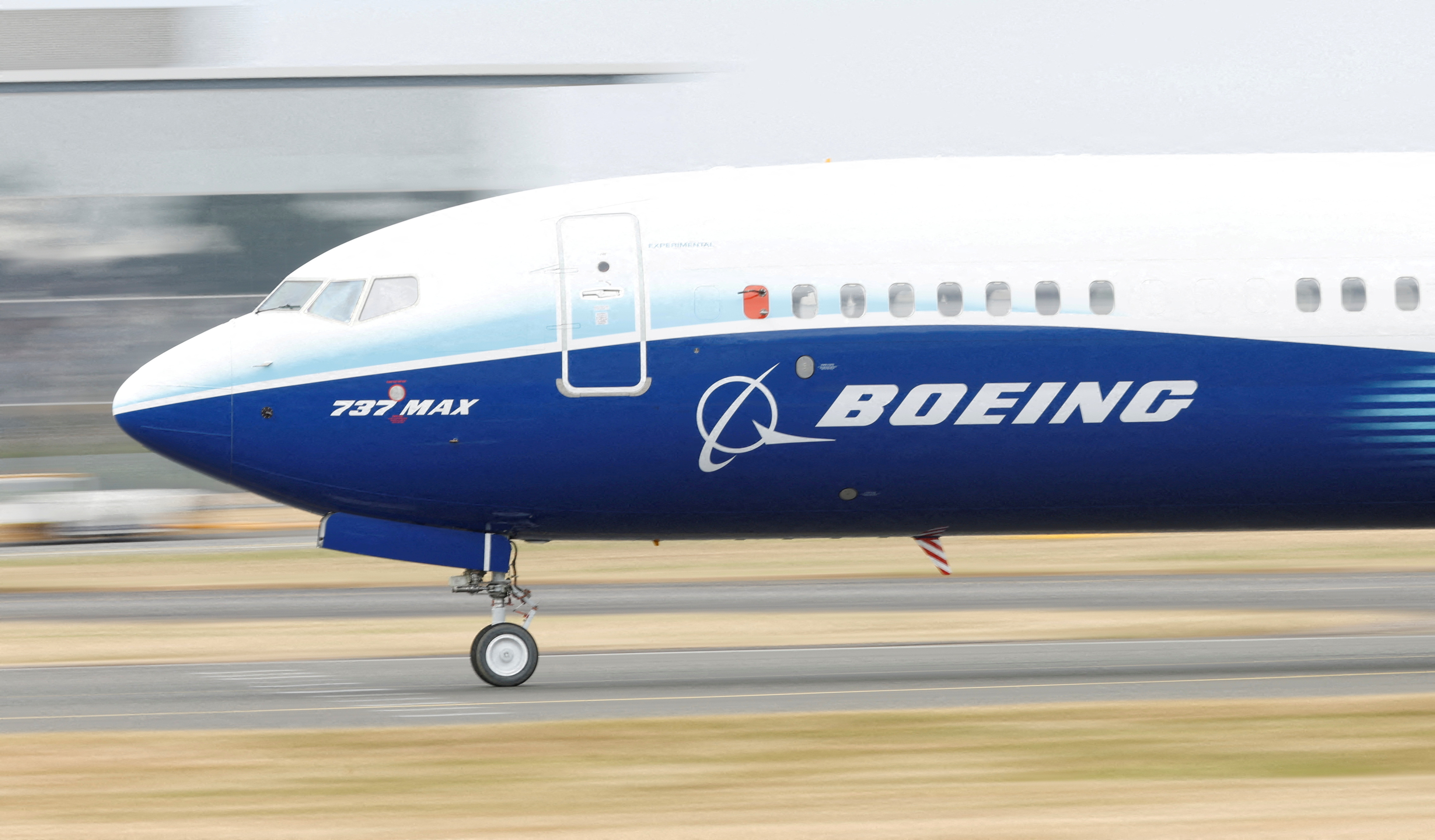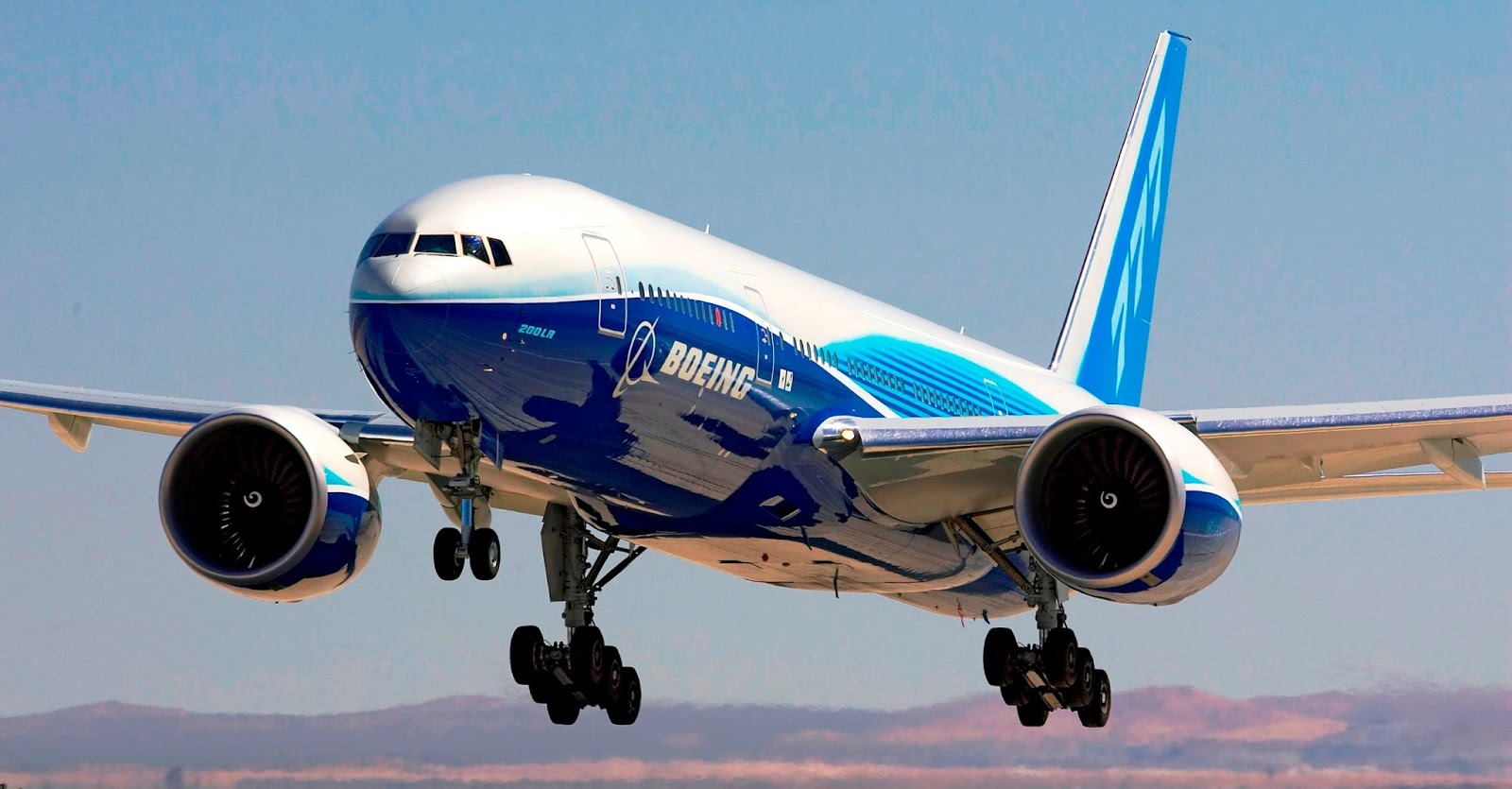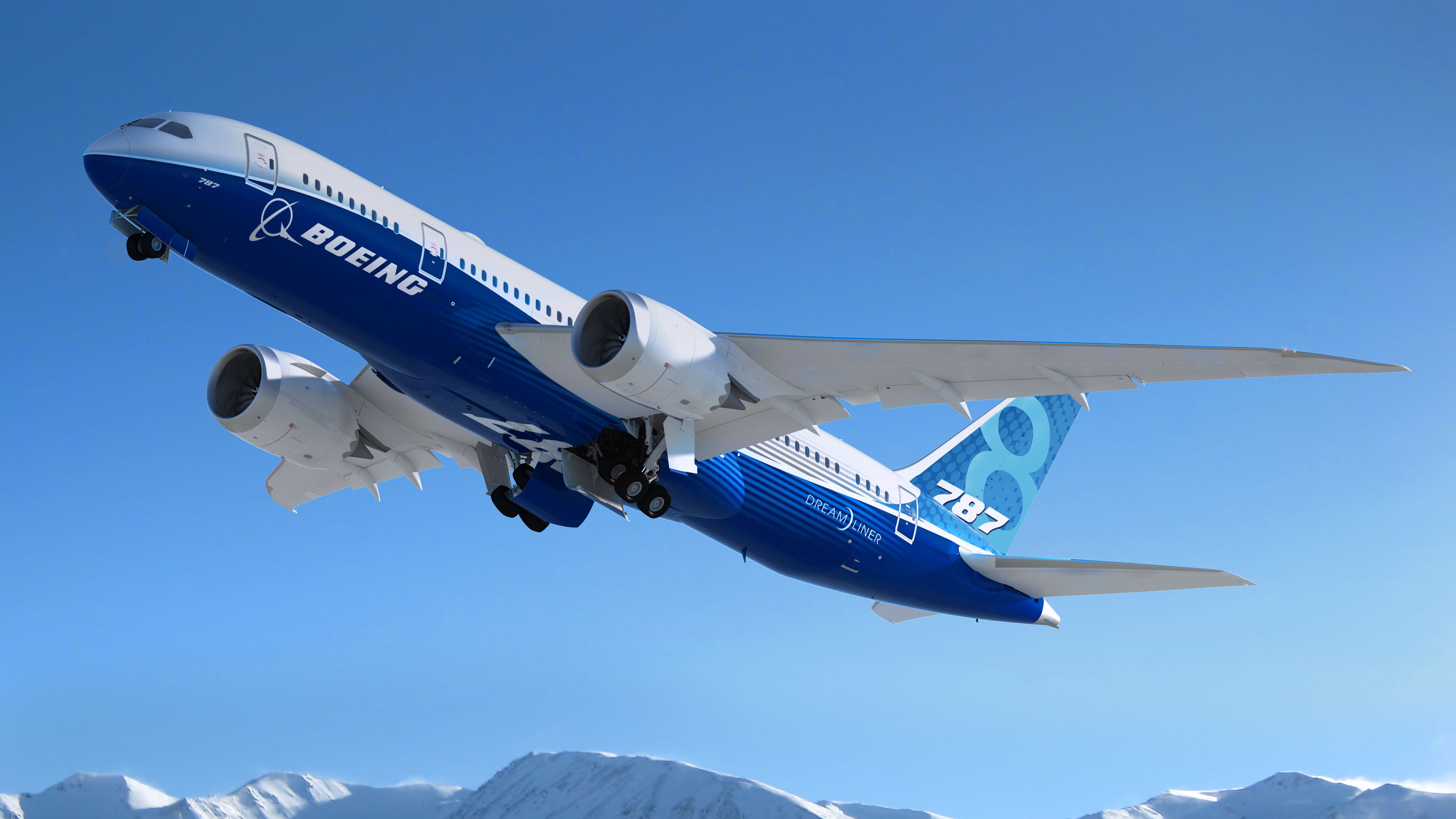The Boeing 737 MAX 8, a name many people know quite well these days, has certainly seen its share of ups and downs. It's a plane that, you know, really captured the world's attention, not always for the best reasons. We're going to talk about this aircraft, its story, and what makes it such a talked-about machine in the sky. For anyone who keeps an eye on aviation, or just wonders about the planes they fly on, this model has a lot to teach us about modern air travel and safety.
There's a lot to unpack when we consider the Boeing 737 MAX 8, and it's a topic that sparks quite a bit of conversation, actually. From its initial promise as a fuel-efficient workhorse for airlines to the very serious challenges it faced, this aircraft's path has been, well, pretty complex. It makes you think about how new technology mixes with the absolute need for safety in something as important as flying. So, we're going to explore what makes this particular plane stand out, for better or for worse.
For folks interested in the bigger picture of air travel, the story of the Boeing 737 MAX 8 is more than just about one type of plane; it's about the whole aviation industry, too it's almost. It touches on how planes are designed, how they're certified, and how airlines operate them. We'll get into some of the important details that help us grasp why this aircraft became such a significant point of discussion globally, and what has changed because of it, basically.
Table of Contents
- Introduction to the Boeing 737 MAX 8
- The Design and Purpose of the MAX 8
- The Challenging Period and Its Causes
- Getting Back in the Sky and Ongoing Oversight
- Market Dynamics and Competition
- The Human Element in Aviation
- What This Means for Passengers
- Frequently Asked Questions about the Boeing 737 MAX 8
Introduction to the Boeing 737 MAX 8
The Boeing 737 MAX 8 is a key part of Boeing's famous 737 family, which has been flying for many years, you know. This particular version was made to be more fuel-friendly and to fly longer distances than its older relatives. It first took to the skies as a way for airlines to save money on fuel while still carrying a good number of people, which is pretty important for their business models, actually. It was meant to be a step forward, a modern take on a classic aircraft design.
When you think about the different planes out there, like perhaps the venerable Boeing 727, which Mach 2 recently released as a model in 1/72nd scale, you get a sense of how Boeing has evolved its designs over time. The 737 MAX 8 was the latest iteration in a long line of successful, single-aisle jets, basically. It aimed to keep Boeing ahead in a very competitive market, offering airlines a plane that could fit into many different routes and operations, which it did for a while.
This aircraft, the 737 MAX 8, quickly became a big part of many airline fleets around the world, you see. It was designed to be a workhorse, flying many times a day on various routes. Its quick adoption by airlines showed just how much they needed a plane that was efficient and reliable, or at least appeared to be, for their everyday operations. So, it was really supposed to be a success story from the start, a kind of new chapter for Boeing.
The Design and Purpose of the MAX 8
The Boeing 737 MAX 8 was built with new engines, larger ones that sit a bit more forward on the wing compared to older 737 models, you know. These engines, called LEAP-1B engines, are what made the plane much more fuel-efficient, a really big deal for airlines trying to cut costs. The design changes, including those engine placements, meant the aircraft flew a little differently, which is something engineers had to account for, obviously.
To help the plane handle these design differences, especially with the bigger engines, Boeing added a system called MCAS, or Maneuvering Characteristics Augmentation System, that. This system was meant to make the plane feel like older 737s to pilots, even with the new engine setup. It was a piece of software designed to nudge the nose down automatically if it sensed the plane was getting too high, or stalling, which sounds like a good idea on paper, essentially.
The main goal of the 737 MAX 8 was to offer airlines a very capable plane that could fly a good distance with lower fuel burn, which, honestly, is what every airline wants. It was meant to be a direct competitor to other popular single-aisle jets, like some of those from Airbus, which, you know, also have their own records of accidents and incidents that get checked out. This competition pushes companies to innovate, but it also puts a lot of pressure on them to deliver quickly, sometimes.
The Challenging Period and Its Causes
The Boeing 737 MAX 8 faced some very serious challenges after two terrible accidents, one in Indonesia and another in Ethiopia, you know. These events, which happened within a few months of each other, led to a worldwide grounding of the aircraft. It was a really shocking time for the aviation world, and it made everyone stop and look very closely at what had happened with this particular plane, obviously.
Investigations into these accidents pointed to the MCAS system as a key factor, which was a pretty big revelation, actually. It seemed there were issues with how the system got its information and how it behaved in certain situations. This raised many questions about the plane's design, its software, and the way it was approved to fly, which, you know, is a very serious matter for everyone involved in air travel.
The period of the grounding was a tough one for Boeing, for the airlines that had bought the planes, and for the flying public, too it's almost. It made people think a lot about safety and trust in air travel. It also brought a lot of attention to the processes within a big company like Boeing, and how different levels of management, perhaps like those manager levels K, L, and M that someone asked about, might affect product development and oversight, basically.
The MCAS System, Explained
The MCAS system was designed to automatically push the plane's nose down in specific flight conditions, you know, to prevent a stall. It was supposed to work in the background, making small adjustments. The problem, it turned out, was that it relied on just one sensor to get its information, and if that sensor gave bad data, the system could push the nose down repeatedly and very strongly, which is really not good for a plane in the air, obviously.
Pilots, it seems, were not fully aware of how aggressive this system could be or how to quickly counteract it when it went wrong, basically. This lack of complete information for the flight crews was a major concern. It highlights the importance of not just having safety systems, but also making sure pilots fully grasp how they work in all situations, which is pretty fundamental to safe flying, actually.
The fix for the MCAS system involved making it take information from two sensors instead of one, and also making sure it wouldn't push the nose down repeatedly, among other changes, that. It also gave pilots more ways to override the system if it started acting up. These software updates were a big part of getting the plane ready to fly again, a truly necessary step to restore trust in the aircraft, you know.
The Grounding and Its Impact
The decision to ground the entire fleet of Boeing 737 MAX 8 aircraft worldwide was a huge event, one of the biggest in aviation history, actually. It meant hundreds of planes were parked, and airlines had to cancel thousands of flights, which caused a lot of disruption and financial strain, obviously. For many people who had booked flights, it was a very confusing and frustrating time, you know.
This grounding had a ripple effect across the whole aviation industry, too it's almost. It affected Boeing's production lines, its reputation, and even its relationships with airlines. It also put a spotlight on the regulatory bodies that approve aircraft, leading to changes in how new planes are certified around the world, which is a pretty big deal for future aircraft designs, essentially.
The impact wasn't just on the big companies; it affected people directly, like someone who might have interviewed at Boeing three weeks ago and was waiting for a letter, wondering about the company's future, you know. It showed how interconnected the industry is, and how problems with one aircraft type can have very wide-ranging consequences for many different people and businesses, basically.
Getting Back in the Sky and Ongoing Oversight
After a long period of software updates, new pilot training, and very thorough reviews by aviation authorities around the world, the Boeing 737 MAX 8 slowly started to get approval to fly again, you know. It was a gradual process, with each country's aviation body doing its own checks before giving the green light. This cautious approach was meant to rebuild trust and make sure everything was truly safe, obviously.
Pilots who now fly the 737 MAX 8 go through specific training that includes detailed information about the updated MCAS system and how to handle any unexpected situations, that. This training is a crucial part of the safety measures put in place. It's about making sure the people at the controls are fully prepared for anything, which is, honestly, what we all want when we fly, basically.
Even now, the 737 MAX 8 is under very close watch by regulators and the public, too it's almost. There's ongoing scrutiny to ensure its continued safe operation. This persistent oversight is a good thing, as it keeps everyone on their toes and helps make sure that the lessons learned from those past incidents stay at the forefront of aviation safety, you know. It's a constant effort to maintain the highest standards.
Market Dynamics and Competition
The challenges faced by the Boeing 737 MAX 8 certainly opened up some interesting questions about the wider market for aircraft, you know. With Boeing facing production delays and a hit to its reputation, some people started to wonder if there was a bigger opening for other aircraft makers, like Embraer, to step into the U.S. market, for instance, beyond just their smaller regional jets, obviously.
Embraer's larger E-Jets, like the 190 and 195 models, are used quite a lot by international airlines, and they're pretty good planes, actually. The idea was that if airlines were feeling a bit uncertain about Boeing, they might look more closely at what Embraer could offer in the single-aisle space. This kind of competition is healthy for the industry, as it pushes all manufacturers to do their very best, basically.
The situation with the MAX also highlighted how important it is for airlines to have choices when buying planes, that. A strong, competitive market means better planes and more options for carriers, which can lead to better service and prices for passengers. It's a reminder that no single company can afford to rest on its laurels, as the market can shift quite quickly, you know.
The Human Element in Aviation
Beyond the technical aspects of aircraft design and systems, the human element plays a huge role in aviation safety, you know. This includes everything from the pilots in the cockpit to the engineers who design the planes, and even the people who manage the production lines. Every single person has a part to play in making sure flights are safe, obviously.
We sometimes hear about other incidents, like a Boeing 777 that was on its way from San Francisco to Rome, suddenly issuing an emergency squawk code and landing in Reykjavík. These events, even if they're not related to the MAX, remind us that flying is a complex activity where unexpected things can happen, and quick, skilled human response is absolutely necessary, basically.
The phrase "heavy plane, high density altitude (high heat alert for area), no flaps so when it did finally get in the air it" sounds like a scenario that really puts a pilot's skills and a plane's design to the test, you know. It shows that even with the best technology, the human ability to make good decisions under pressure is what often makes the difference between a minor issue and a major problem. It's a truly critical part of the whole system, actually.
What This Means for Passengers
For those of us who fly, the story of the Boeing 737 MAX 8 is a reminder of how much goes into making air travel safe, you know. It shows that even with advanced technology, there's always a need for careful oversight, continuous learning, and a commitment to putting safety first. When you step onto a plane now, you can be pretty sure that a lot of very serious work has gone into making it safe, basically.
Airlines and regulators have really learned a lot from the MAX experience, and these lessons are helping to shape the future of air travel, that. There's more focus on transparent communication, thorough pilot training, and very robust certification processes for new aircraft. It's all about building back and keeping that trust with the flying public, which is, honestly, paramount for the industry, you know.
So, when you see a Boeing 737 MAX 8 at the gate today, you can know that it has undergone a very extensive review and has new systems and procedures in place. It's a plane that has been through a lot, and because of that, it's under constant watch, which, you know, gives a certain level of reassurance for anyone getting ready to fly. Learn more about aviation safety on our site, and link to this page for more details on aircraft types.
Frequently Asked Questions about the Boeing 737 MAX 8
Is the Boeing 737 MAX 8 safe to fly now?
Yes, the Boeing 737 MAX 8 is considered safe to fly now, you know. After the two accidents, the aircraft underwent very significant software updates, along with changes to pilot training and new safety checks. Aviation authorities around the world, like the FAA in the U.S., have approved its return to service after very careful reviews, basically.
What were the main issues with the Boeing 737 MAX 8?
The main issues with the Boeing 737 MAX 8 were related to a flight control system called MCAS, you know. This system, meant to help the plane fly like older 737s, could get incorrect information from a single sensor. This could cause it to push the plane's nose down repeatedly, making it difficult for pilots to control the aircraft, which was a very serious problem, obviously.
How was the Boeing 737 MAX 8 fixed?
The Boeing 737 MAX 8 was fixed primarily through software updates to the MCAS system, that. These updates made the system use data from two sensors instead of one and prevented it from repeatedly pushing the nose down. Pilots also received new, extensive training on how to handle the updated system and how to respond in unusual flight situations, which was a very important part of the fix, you know.



Detail Author:
- Name : Gracie Wisozk
- Username : casimir.lueilwitz
- Email : nblick@yahoo.com
- Birthdate : 1985-09-22
- Address : 6315 Nienow Points Mikelfort, MN 13633
- Phone : 234-433-6832
- Company : Wiza, Ernser and Dickinson
- Job : Tire Changer
- Bio : Animi dolorum est porro occaecati et. Dolor at natus commodi sit recusandae minus. Repellat eligendi ut mollitia tempore voluptatem ab.
Socials
instagram:
- url : https://instagram.com/kian9242
- username : kian9242
- bio : Magnam voluptates voluptas velit. Earum sed iusto alias autem.
- followers : 2364
- following : 289
facebook:
- url : https://facebook.com/kian_kuvalis
- username : kian_kuvalis
- bio : Exercitationem ut dolore nihil quo voluptatum non officiis quos.
- followers : 6682
- following : 1156
twitter:
- url : https://twitter.com/kuvalisk
- username : kuvalisk
- bio : Ratione maiores voluptas assumenda est sapiente. Quia aliquid reprehenderit et aut. Possimus accusantium cum culpa possimus dolores vel debitis.
- followers : 529
- following : 384